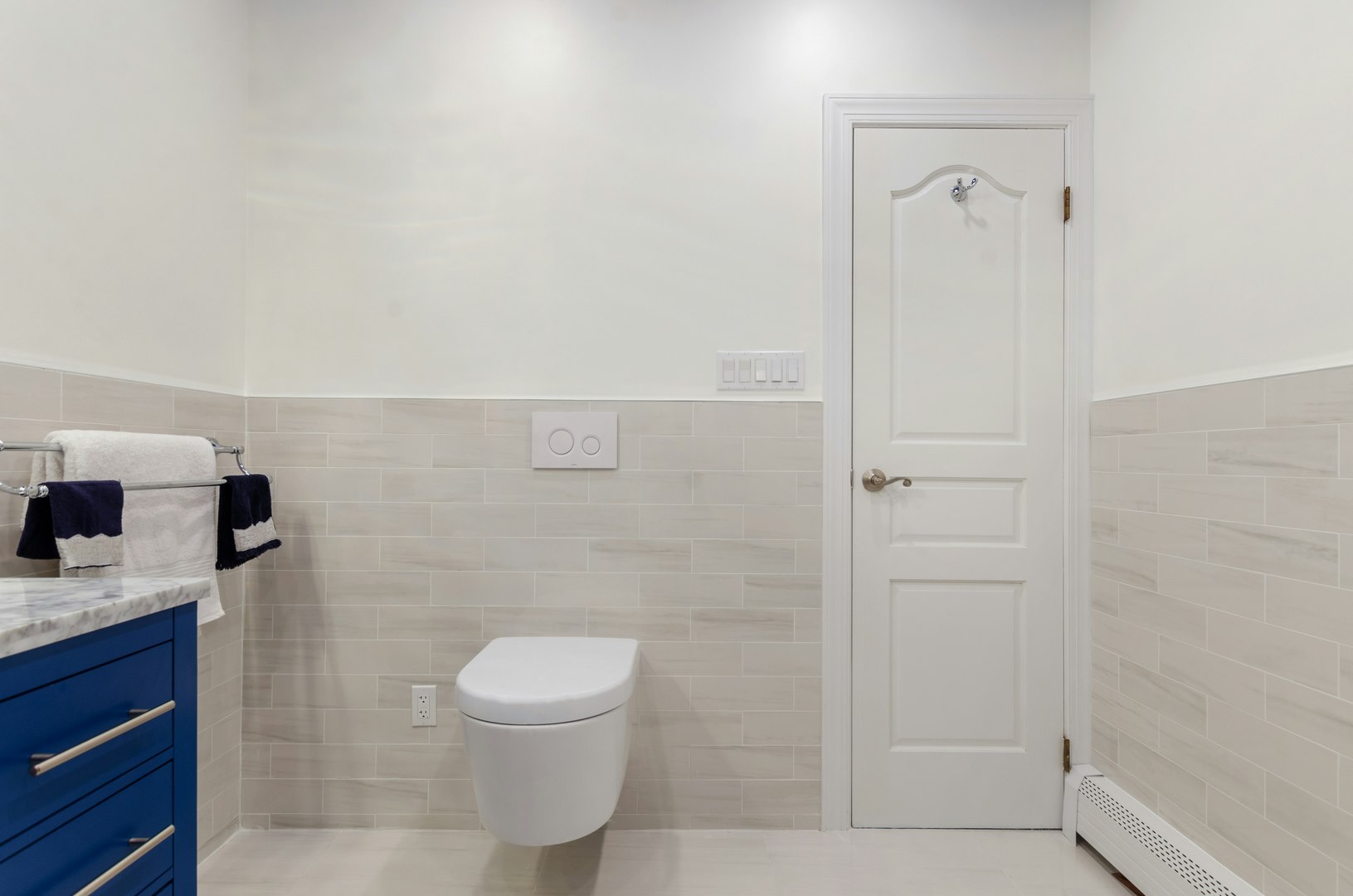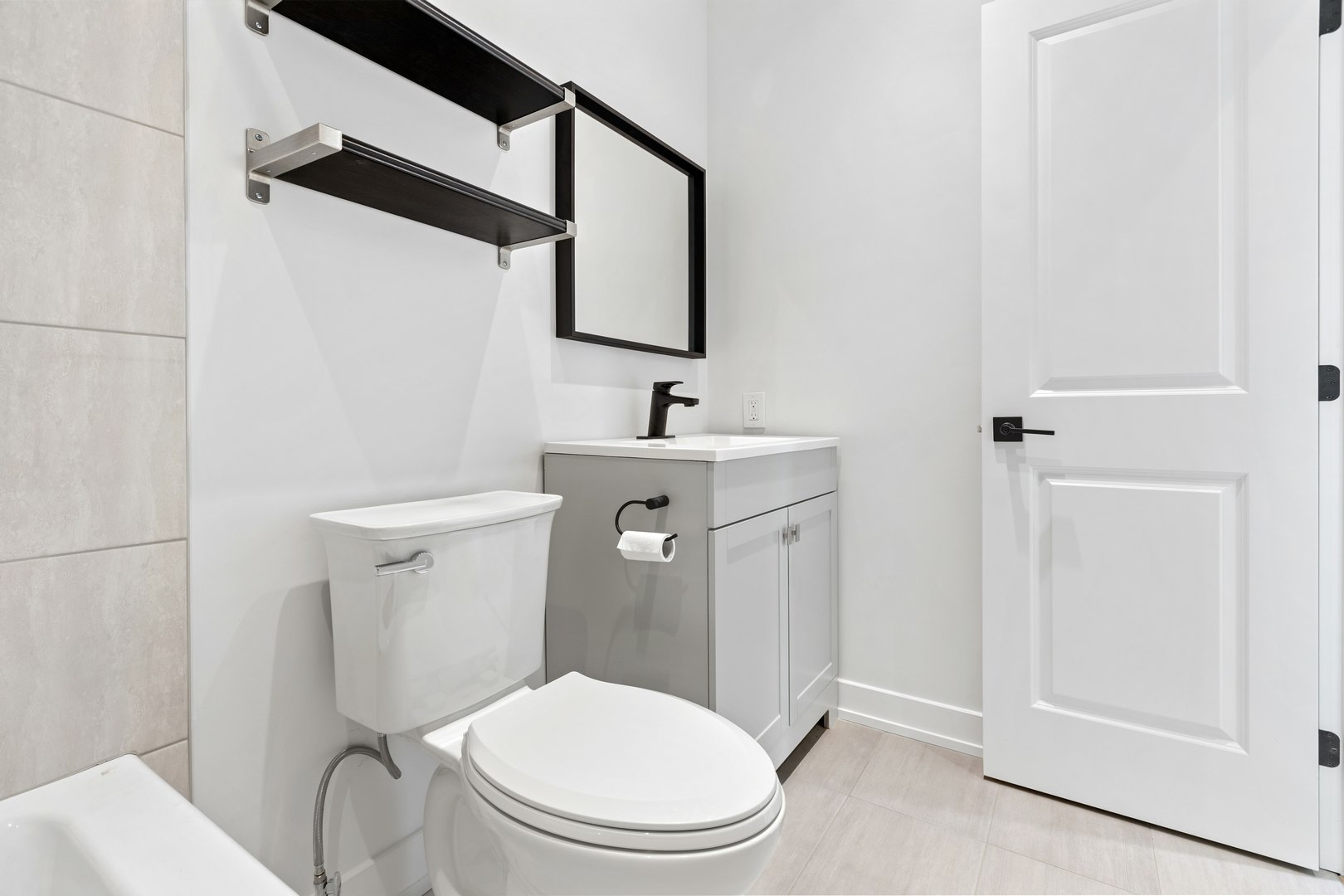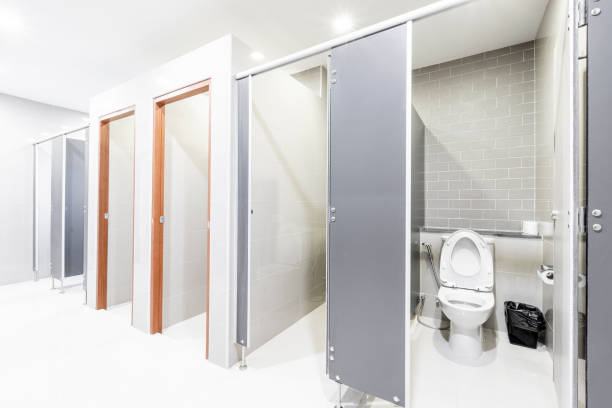When considering the distinctions between commercial and residential toilets, one must look beyond the surface to understand their unique roles and requirements. These differences are not merely cosmetic but rooted in practical considerations such as durability, flushing mechanisms, and water efficiency. With commercial toilets crafted to endure high traffic and rigorous use, their residential counterparts prioritize comfort and design. However, understanding how these factors influence installation, maintenance, and cost can be enlightening. So, what truly sets these two types of toilets apart regarding functionality and design? The answer lies in exploring these aspects further.
To comprehend the nuances of toilet selection, it is essential to first understand the various types available on the market, each designed to meet specific needs and preferences. Toilets can broadly be categorized into two main types: gravity-fed and pressure-assisted systems. Gravity-fed toilets utilize the natural force of gravity to move water from the tank into the bowl, while pressure-assisted toilets employ a pressurized tank to enhance flushing efficiency. Both offer unique toilet features catering to different user preferences.
Furthermore, toilets vary regarding bowl design, with options including elongated and round shapes. Elongated bowls are typically favored in commercial settings due to their increased comfort and accessibility, whereas round bowls are often chosen for residential applications where space constraints are a concern. Additionally, dual-flush systems offer users the option to select between a full or partial flush, providing water conservation benefits and aligning with eco-conscious preferences.
Height is another vital factor, with standard and comfort heights available to accommodate varying user needs. Comfort height toilets, standing at approximately 17 to 19 inches, are designed to facilitate ease of use, particularly for older adults or individuals with mobility issues. Understanding these intricacies enables informed decision-making in toilet selection.

Understanding the various toilet types sets the stage for examining their flushing power, a crucial aspect that influences both performance and efficiency. Flushing technology is the cornerstone of this comparison, with commercial toilets often utilizing pressure-assisted systems, while residential models typically employ gravity-fed mechanisms. Pressure-assisted systems leverage compressed air to forcefully expel water, achieving superior waste removal and reducing clogging incidents. Conversely, gravity-fed systems rely on water weight, offering quieter operation and ease of maintenance.
Performance metrics provide a quantitative basis for evaluating flushing efficacy. Gallons per flush (GPF) is a primary metric, with commercial toilets generally operating at a standardized 1.6 GPF, aligning with regulatory requirements for public use. Residential toilets, however, have evolved to include high-efficiency models that function at 1.28 GPF or lower, reflecting a trend towards water conservation without compromising effectiveness.
Another crucial performance metric is the Maximum Performance (MaP) score, which measures waste removal capacity. Commercial toilets often boast higher MaP scores, emphasizing their robust design for high-traffic environments. In contrast, residential toilets prioritize balance, ensuring adequate performance while maintaining a focus on water efficiency and noise reduction.
The installation requirements for toilets, whether commercial or residential, differ markedly due to their distinct design and functional demands. Commercial toilets are engineered for high-frequency use and must adhere to stringent plumbing codes and standards, requiring precise toilet dimensions to accommodate increased water pressure and consistent operation. Typically, commercial installations necessitate wall-mounted models, demanding specialized installation tools and professional skills to guarantee proper alignment and secure mounting. The installation also often involves robust flushing systems, such as flushometers, which require connection to a dedicated water supply line, adding complexity to the setup.
Conversely, residential toilets generally feature a floor-mounted design, simplifying the installation process. Homeowners commonly install these with basic plumbing tools, as residential models are tailored to fit standard bathroom layouts and plumbing configurations. The toilet dimensions in residential settings are more forgiving, allowing for a broader selection of models to accommodate diverse aesthetic preferences and space considerations. However, both settings demand accuracy in aligning the toilet flange with the existing plumbing infrastructure to prevent leaks or inefficiencies.

When evaluating water efficiency in toilets, a critical metric is the Gallons Per Flush (GPF), which directly influences both utility costs and resource conservation. The adoption of low-flow technology, which reduces GPF, offers significant benefits by minimizing water usage without compromising performance, thereby aligning with sustainability goals. An environmental impact assessment further underscores the importance of selecting efficient systems, as it quantifies the potential reduction in water consumption and its positive implications for ecosystem preservation.
Evaluating water efficiency is essential when selecting between commercial and residential toilets, as it directly impacts both environmental sustainability and operational costs. The metric commonly used to measure this is Gallons Per Flush (GPF), which indicates the volume of water used per flush. Understanding the nuances of toilet design and user preferences is vital for making informed decisions. Traditional residential toilets, previously consuming up to 5 GPF, have evolved to contemporary designs utilizing as low as 1.6 GPF, aligning with federal standards. Conversely, commercial toilets often employ advanced flushing mechanisms, offering a range of GPF settings to accommodate high-traffic environments and diverse user needs.
| Toilet Type | Typical GPF Range | Design Considerations |
| Residential | 1.28 - 1.6 | Emphasis on user comfort |
| Commercial | 1.0 - 1.6 | Focus on durability and efficiency |
| Dual-Flush | 0.8/1.6 | Flexibility for user preferences |
| Pressure-Assisted | 1.0 - 1.4 | Enhanced flushing power |
Choosing the right GPF depends on balancing water conservation with performance. For environments with high usage, such as public restrooms, lower GPF models can considerably reduce water consumption without sacrificing functionality. For residential settings, user preferences and toilet design should guide the decision, ensuring both efficiency and comfort.
Incorporating low-flow technology into modern toilet designs offers significant benefits in water efficiency, an essential consideration for both environmental impact and cost savings. Low-flow toilets are engineered to use a maximum of 1.6 gallons per flush, compared to the 3.5 to 5 gallons used by older models. This substantial reduction in water use translates into lower utility bills and a more sustainable approach to water resource management.
The advantages of low-flow toilet technology extend beyond mere water conservation. Advanced engineering features such as pressure-assist mechanisms and dual-flush options optimize performance without compromising on effectiveness. Pressure-assist toilets utilize compressed air to enhance flushing power, guaranteeing waste is efficiently cleared while maintaining low water usage. Dual-flush systems offer users the choice between a reduced flush for liquid waste and a full flush for solid waste, further enhancing water efficiency.
Furthermore, the integration of modern materials and design innovations in low-flow toilets guarantees they meet the rigorous demands of both commercial and residential settings. By adopting low-flow toilet technology, users gain greater control over their water usage, leading to long-term financial savings and responsible resource management. This makes low-flow toilets a prudent choice for those prioritizing efficiency and sustainability.
An environmental impact assessment focusing on water efficiency considerations underscores the critical role that toilets play in sustainable resource management. Evaluating the toilet lifecycle reveals significant opportunities for water conservation, impacting both residential and commercial settings. Toilets account for nearly 30% of household water usage, making their efficiency paramount in reducing overall consumption. Commercial toilets, often subject to stringent environmental regulations, typically employ advanced technologies like dual-flush systems to optimize water use without sacrificing performance.
The adoption of high-efficiency toilets (HETs) is central to minimizing ecological footprints. These units comply with rigorous standards, such as the U.S. Environmental Protection Agency's WaterSense program, which mandates a maximum of 1.28 gallons per flush —20% less than the federal standard of 1.6 gallons. Compliance with these environmental regulations guarantees that both residential and commercial toilets contribute to sustainable water management practices.
Moreover, an understanding of the full toilet lifecycle—from manufacturing and installation to usage and disposal—enables stakeholders to make informed decisions. By considering these factors, individuals and organizations can enhance their control over environmental impacts, aligning with broader sustainability goals and contributing to resource conservation on a global scale.

In evaluating the cost implications of selecting between commercial and residential toilets, it is essential to contemplate both the initial purchase price and the long-term maintenance costs. Commercial toilets often present a higher upfront investment due to their robust construction and enhanced durability features designed to withstand heavy usage. However, their long-term maintenance costs may be lower compared to residential models, as they are engineered for efficiency and reduced frequency of repairs.
When evaluating the initial purchase price of toilets, a critical distinction arises between commercial and residential models. Commercial toilets are generally engineered to withstand higher usage frequencies and are consequently often priced higher than residential counterparts. This price variance is influenced by the design specifications and the robust materials employed to endure daily commercial wear and tear. Brand comparisons reveal marked differences in pricing tiers, with high-end commercial brands offering advanced features such as sensor-operated flush systems and water-saving technologies, potentially elevating the initial cost.
In contrast, residential toilets are typically more affordable, with user reviews frequently highlighting a wider spectrum of price points to accommodate diverse budgetary constraints. Brands catering to residential markets often prioritize aesthetic design and ergonomic comfort, which can affect price depending on the model and features. It's prudent for consumers to conduct thorough brand comparisons and scrutinize user reviews to ascertain the most cost-effective option that aligns with their specific needs.
Ultimately, the initial purchase price is a pivotal factor in decision-making, necessitating a detailed analysis of brand offerings, user feedback, and feature sets to guarantee an informed choice, whether for commercial or residential applications.
Evaluating sustainability in toilet maintenance is essential for understanding long-term costs associated with commercial and residential models. The primary factors influencing these costs include the toilet lifespan, repair frequency, and the complexity of maintenance procedures. A thorough cost and budget analysis must consider these elements to empower purchasers with clear, actionable insights.
Understanding these aspects aids in making informed decisions, aligning budgetary constraints with maintenance needs.
Guaranteeing the longevity and efficiency of a toilet system requires a meticulous approach to maintenance and repairs, particularly when distinguishing between commercial and residential models. In commercial settings, the repair frequency is generally higher due to increased usage. For residential toilets, however, issues might arise less frequently but require different troubleshooting tips tailored to household plumbing systems.
| Aspect | Commercial Toilets |
| Usage Frequency | High |
| Common Issues | Clogs, valve failures, flush mechanism wear |
| Troubleshooting Tips | Regular inspection, professional servicing |
| Aspect | Residential Toilets |
| Usage Frequency | Moderate |
| Common Issues | Leaks, running water, minor clogs |
| Troubleshooting Tips | DIY fixes, occasional professional help |
In commercial environments, preventative maintenance is vital. Regular inspections and professional servicing can mitigate frequent valve failures and guarantee peak flush mechanism performance. Conversely, residential toilets may benefit from DIY troubleshooting tips, such as checking flapper valves or adjusting float levels to address minor leaks or running water issues.
Understanding these nuances allows for tailored maintenance strategies, enhancing the performance and lifespan of both commercial and residential toilets. Proper management guarantees operational efficiency and reduces the necessity for frequent repairs, ultimately offering cost-saving advantages.

To achieve the long-term durability of toilet systems, it is essential to understand the structural and material differences between commercial and residential toilets. Material selection plays a pivotal role in this regard. Commercial toilets often utilize robust materials such as stainless steel or high-grade vitreous china, which are designed to withstand high user capacity and frequent usage. In contrast, residential toilets typically use standard vitreous china, which is sufficient for lower user capacity but may not endure the rigors of commercial settings.
When considering long-term durability, the following factors are vital:
Commercial toilets often exhibit higher toilet sound levels compared to residential models due to their robust flushing mechanisms. Installation considerations should include soundproofing strategies to mitigate noise, ensuring a more controlled and comfortable restroom environment.
A residential toilet can technically be used in a commercial setting; however, considerations regarding toilet durability and plumbing requirements are essential. Residential models may not withstand high-frequency use nor align with commercial plumbing standards, potentially leading to inefficiencies.
Commercial toilets necessitate specific cleaning supplies to meet rigorous sanitation standards. Due to higher usage, cleaning frequency must be increased, requiring professional-grade disinfectants effective against a wide range of pathogens to guarantee compliance with health regulations and maintain hygiene.
The aesthetic differences between commercial and residential toilets primarily involve toilet styles and design materials. Commercial toilets typically feature streamlined designs with durable materials for high traffic, while residential models offer diverse styles and materials prioritizing personal taste and comfort.
Toilet design greatly impacts user experience through ergonomic features that enhance comfort and functionality. User accessibility is optimized by accommodating diverse needs, ensuring ease of use, and promoting efficient, seamless interactions within both residential and commercial environments.
In conclusion, commercial and residential toilets differ markedly in design, durability, flushing mechanisms, installation requirements, water efficiency, maintenance needs, and cost considerations. Commercial toilets, designed for high-traffic environments, employ robust materials and advanced flushing technologies, necessitating specialized installation and intensive maintenance. Conversely, residential toilets prioritize aesthetics and user comfort, featuring simpler installation and maintenance processes. These distinctions reflect the unique functional demands and usage patterns inherent to commercial and residential settings, guiding the appropriate selection and application of toilet systems.
Understanding the difference between commercial and residential toilets is essential for making informed decisions—whether you’re outfitting a public facility, managing a renovation project, or sourcing sanitary ware in bulk. From flushing mechanisms to installation requirements, choosing the right type ensures long-term performance, compliance, and user satisfaction.
At Sunvin, we specialise in supplying high-quality wholesale sanitary ware, including a wide range of commercial and residential toilets designed for durability, efficiency, and modern aesthetics. Contact us today to get expert recommendations and competitive pricing for your next project.